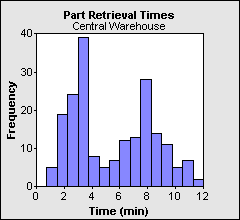Stats at the movies

This article is about the correlation between the rotten tomatoes rating of a movie and its Domestic box office gross. In the first part of the article he relates only two variables, the rotten tomatoes rating is his explanatory variable and the response variable was the box office gross. In the second part of the article he made a regression for box office gross using multiple explanatory variables. I thought it was very interesting how close the projection was for mission impossible three compared to the actual, despite the fact that his r value was relatively low. This article directly relates to what we are learning in stats right now. In the article he talks about regression lines which we are learning about right now. Also in the appendix he goes over the residual plots etc. which we are also learning about. We did not talk about how you can use multiple explanatory variables. We also have not talked about binary variables. Captain America had a rotten tomatoes score of 79% according to the articles regression equation it should have grossed $88.3 million it actually grossed $176.6 million. His model did not predict how the gross very well for Captain America. Holy Motors a film due to be released this week has a rt rating of 92% and it should gross $97.13.
